Travelling can be a stressful time and the last thing you need is an IBS attack. One of my biggest fears before I headed to South America was navigating airplane food. Luckily I’ve found that you can help keep symptoms settled by choosing low FODMAP food options, both in the airport and on the plane.
If you have completed the reintroduction phase of the low FODMAP diet, then your newly gained understanding of trigger foods can give you more freedom when choosing an inflight meal or finding a snack. Check out my guide to eating out to help you find a low FODMAP meal at the airport.
In Flight Food Options
Unfortunately, the aviation community hasn’t recognised our low FODMAP medical diet yet… this means inflight food options tend to be limited. One good thing about inflight meals is that they tend to be small and well balanced. Their portion control is in our favour, as many high FODMAP foods, like sweet potato, beetroot, and butternut pumpkin, have a low FODMAP serving size. This means you can often enjoy a small serve without triggering symptoms.
It’s also important to remember that airline caterers feed thousands of people every day and it normally isn’t possible for them to tailor your meal for you… so let’s have a look at what your options are:
A bland meal is often the best option while on the low FODMAP diet. These meals are generally prepared without herbs, spices, onion, garlic or sauces. This means these meals often contain plain meat, steamed or baked vegetables, and a carbohydrate like potato, rice or plain bread. It is also generally easier to pick the high FODMAP foods out of these meals.
It is often a mistake choosing the low gluten/gluten intolerant meal option. While this option does reduce the fructans from wheat, rye and barley, it often contains other high FODMAP ingredients like onion and garlic.
If onion and garlic are your nemeses, then the Jain vegetarian option might be a good choice. The Jain option excludes onion, garlic, root vegetables, as well as honey and usually contains limited dairy products. Keep in mind that legumes like lentils and chickpeas are often used in this diet and they can be high FODMAP.
The low-fat meal option could be useful if fat is an IBS trigger food for you, however the meal is unlikely to be low FODMAP.
Fruit platter options are generally a poor choice for FODMAPers as they are normally a mixture of high FODMAP and low FODMAP fruit. If this is the type of meal you would like on your flight, then consider packing your own low FODMAP version.
Lacto Ovo meals are vegetarian meals that contain egg and/or dairy products and are likely to contain high FODMAP ingredients.
Hindu meal options are generally spicy and likely to contain onion and garlic, but these meals have limited amounts of dairy so could be an option if lactose causes you the most problems.
Low lactose meal options are great if lactose is your major issue. However these meals could contain other FODMAP groups.
Can’t find a suitable meal?
Take your own snacks or a light meal with you. I am a coeliac, as well as having a tree nut allergy, intolerance to dairy proteins, and issues with high FODMAP foods. This means it is easier for me to pack my own lunchbox to take onto the plane.
Lunch box one included: Homemade chicken fried rice (I asked for this to be heated in the food court and ate it just before I boarded), hard boiled eggs, gluten free chocolate brownie, gluten free pretzels, banana (unripe, although it was slightly bruised!), and pumpkin seeds.
Lunchbox two included: a chicken Cesar salad (I assembled it at the airport after security), plain potato chips, pretzels, homemade granola & rice milk (pack the milk separately in 100ml bottle), and an orange cut into slices.
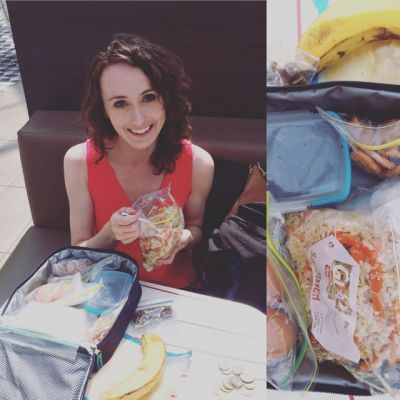
Other lunchbox ideas include:
- Low FODMAP hummus with vegetable sticks, just make sure you eat these first (within four hours unless you can keep it cool) before the hummus goes off.
- Roast vegetable and quinoa salad (eat within a few hours unless you keep it cool)
- Hard boiled eggs (eat within a few hours unless you keep them cool)
- Curry & quinoa fritters (eat within a few hours unless you keep them cool)
- Carrot & corn fritters (eat within a few hours unless you keep them cool)
- Low FODMAP granola bar or muffin
- Low FODMAP trail mix (safe serve of dried cranberries, dark chocolate, pretzels, low FODMAP nuts or seeds)
- Serve of low FODMAP fruit (firm banana, a handful of strawberries, blueberries, orange, kiwifruit, mandarin). Check the Monash University FODMAP Diet app for serving size information.
- Baby carrots
- Plain potato chips or popcorn
- Rice cakes with nut butter or seed butter (limit serve to 2 rice cakes & add banana to make it more filling)
- Low FODMAP cheese and rice crackers
- Dark Chocolate
- Lactose free yoghurt and low FODMAP granola. Make sure you freeze the yoghurt… it will thaw by the time you want to eat it
- Low FODMAP sandwich (eg leftover meat & salad) try and keep it cool
Hummus, yoghurt, nut butter, jam/jelly & salad dressings are considered liquids/gels so make sure you separate them and pack them according to airport regulations to avoid issues as you go through security. Normally these regulations are that the liquids/gels need to be in containers of 100mls (or less) and stored in a clear 1 litre ziplock bag. Check your local airport security guidelines before you fly.
Are you ready to take control of your gut symptoms?
No thanks, my gut is perfect.
Article continues below
Also if your flight is international make sure you throw out uneaten food before going through customs. Many countries have restrictions on what food can be brought into the country.
How to keep your food cold:
- Super-freeze your ice packs by popping them into the freezer for at least 24 hours before you travel.
- Consider making ice packs you can throw away by freezing water in ziplock bags. That way you can throw them out if they start melting before going through security.
- Pack extra ziplock bags that you can fill with ice after going through security. Make sure you double bag the ice so it doesn’t leak when it melts. Ask a fast food outlet or bar for ice (I normally offer to pay them for it – often they won’t charge you). Then use the ice for makeshift icepacks. On the airplane you can throw out the melting ice pack, or drain the liquid in the bathroom and replace it with fresh ice (ask your air host for help).
- Freeze other items going into your cooler bag to keep everything cold.
Final Thoughts
Take some time to prepare before you travel. Talk to your airline about a suitable inflight meal, and if you can’t find one, pack a low FODMAP picnic for the plane or eat before you board.
Article Image Credit: Aureliy/Shutterstock.com; A Little Bit Yummy
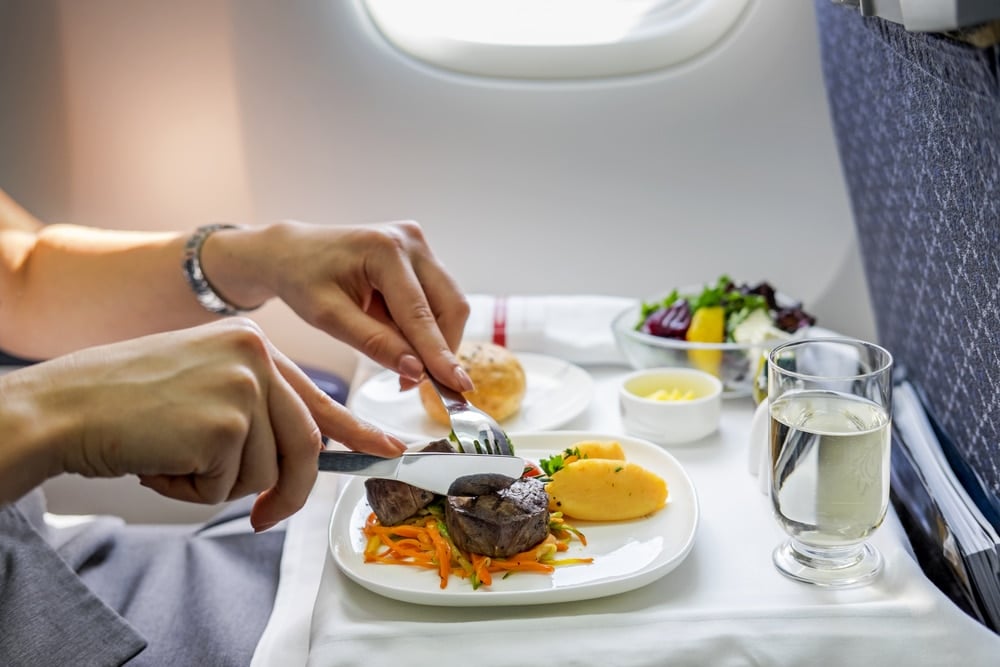
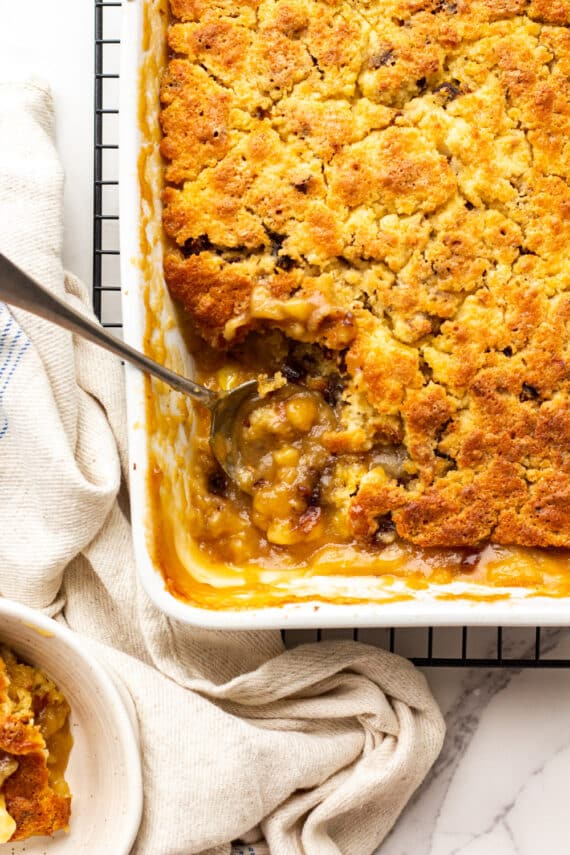
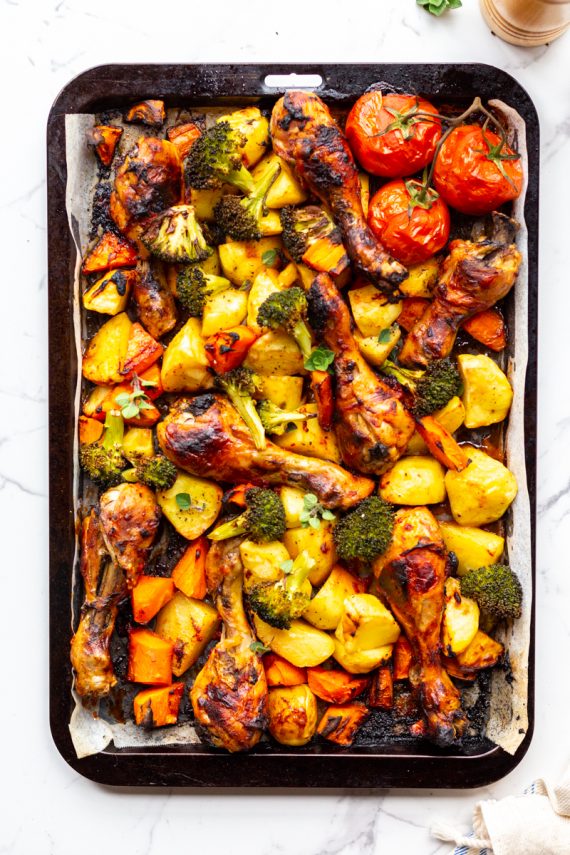
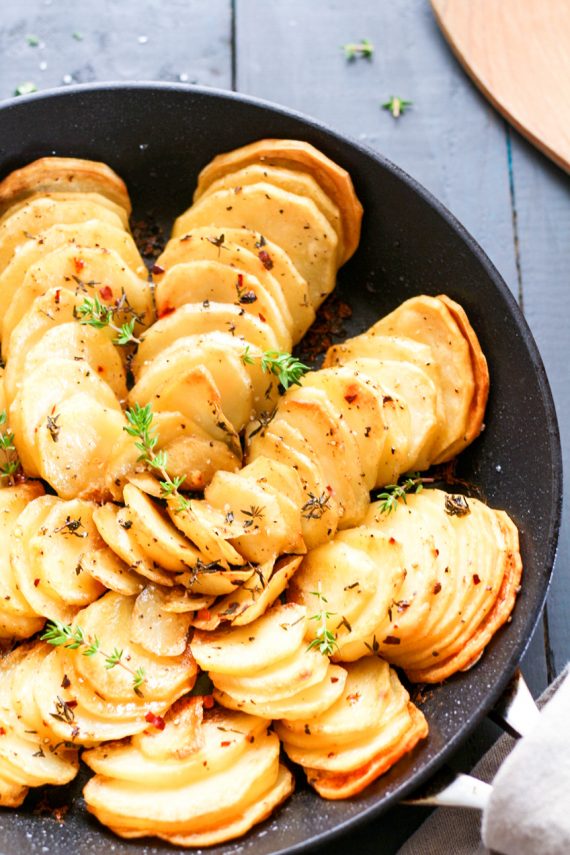
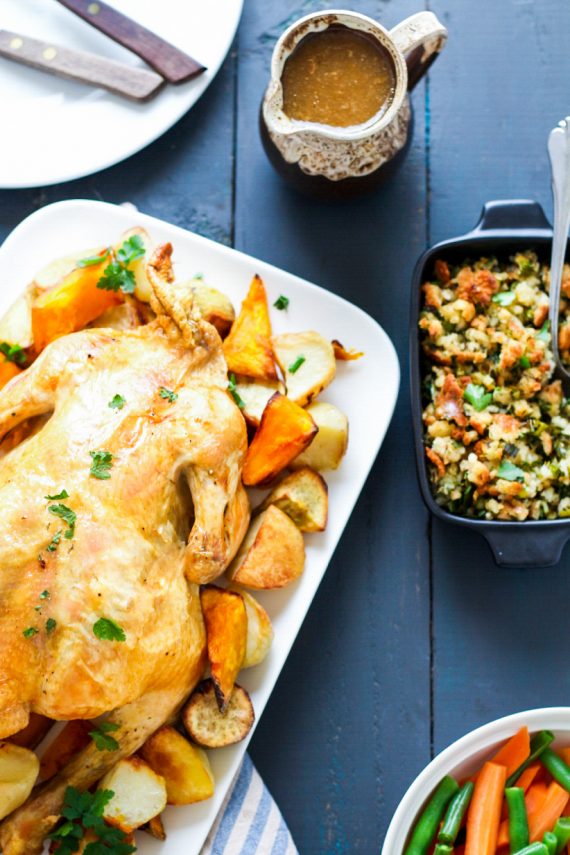






Feeling quietly confident about my upcoming travel to and driving around Spain from Australia after re reading this great article. Thanks so much Alana.
Yay! That’s great to hear Judy. I hope you have an amazing time on your travels.
none of this is helpful on a 20 hour flight.
Hi Lou,
I’m sorry you feel that way. These are the tips I used traveling to and from South America where I ended up being in transit for over 24 hours. I packed my own lunch box with food and made makeshift ice packs as I travelled. It’s not easy but it is definitely possible if you get into the right mindset.